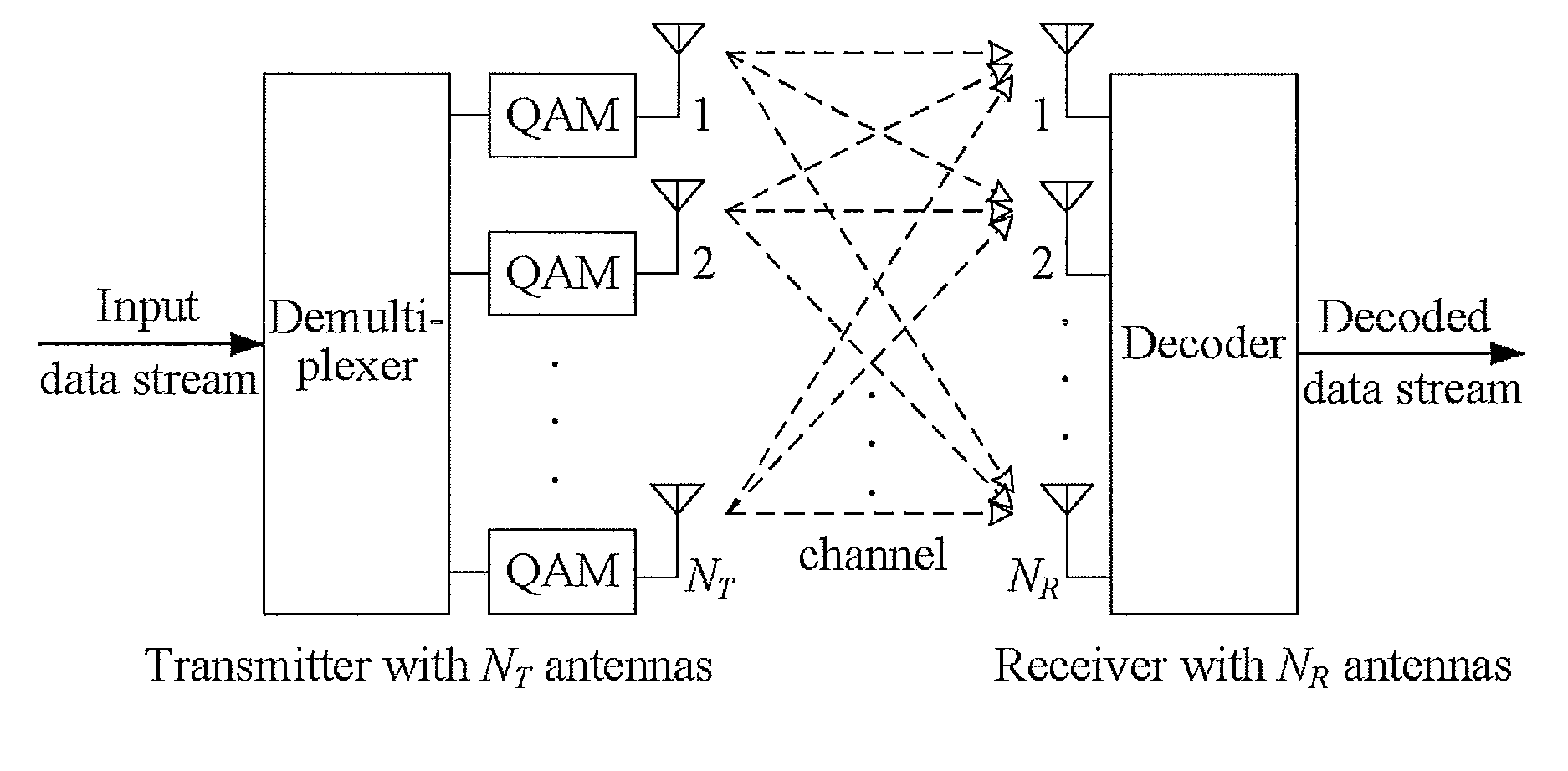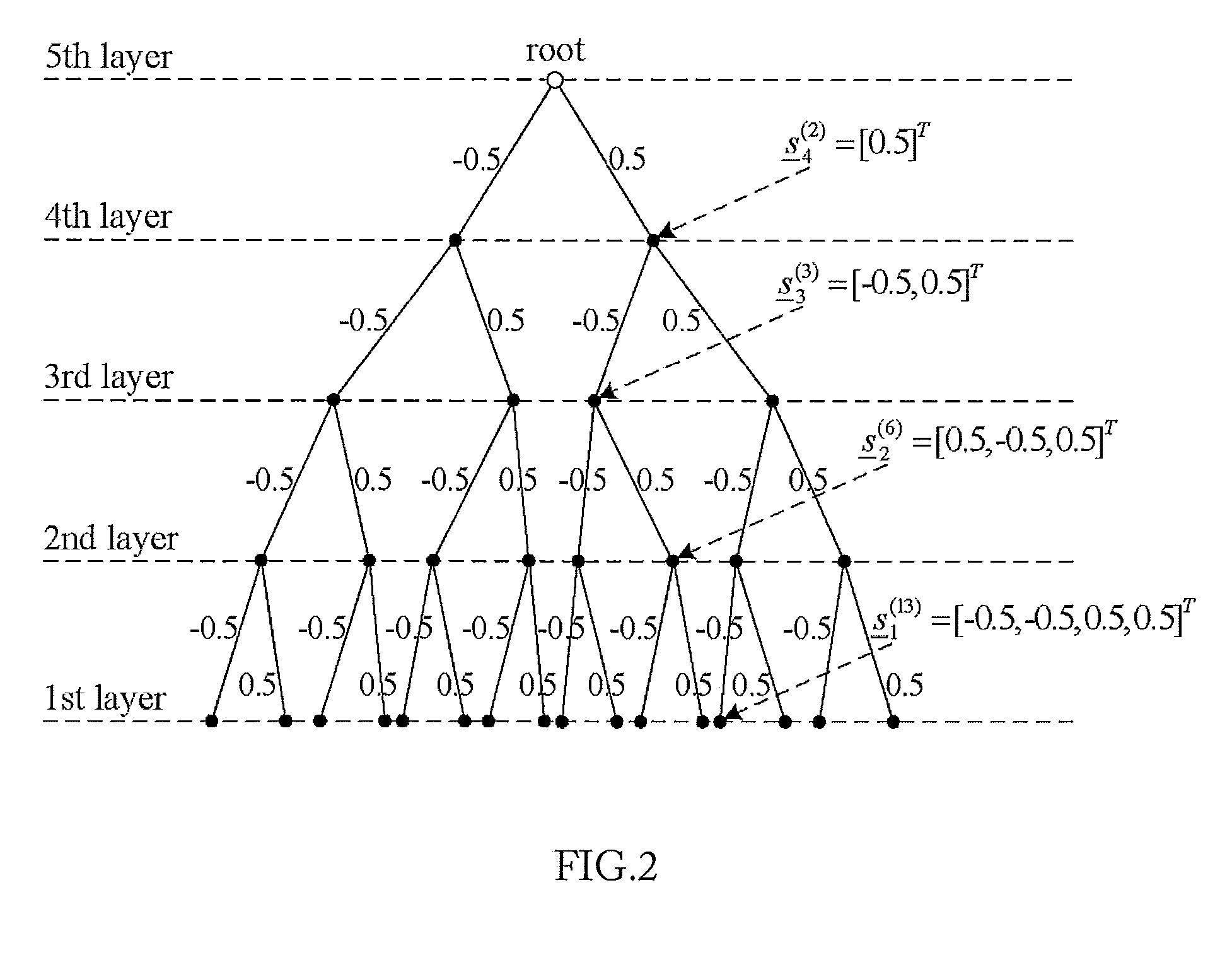Near ML decoding method based on metric-first search and branch length threshold
a decoding method and branch length technology, applied in multiplex communication, orthogonal multiplex, baseband system details, etc., can solve the problem of increasing the computational complexity of the ml decoding device, and achieve the effect of avoiding unnecessary backtracking and connection of nodes and reducing computational complexity
- Summary
- Abstract
- Description
- Claims
- Application Information
AI Technical Summary
Benefits of technology
Problems solved by technology
Method used
Image
Examples
Embodiment Construction
[0025]FIG. 1 shows a block diagram of the MIMO system with NT transmit and NR receive antennas. We assume that the data stream is demultiplexed into NT sub-streams and then sent simultaneously from the NT transmit antennas to the NR receive antennas over a rich-scattering, flat fading wireless channel. It is also assumed that a common quadrature amplitude modulation (QAM) is employed for all the sub-streams. Then, denoting by {tilde over (y)}j the complex signal received at the j-th receive antenna, the discrete-time baseband model of the received signal vector {tilde over (y)}=[{tilde over (y)}1, {tilde over (y)}2, . . . , {tilde over (y)}NR]T can be expressed as
{tilde over (y)}={tilde over (H)}{tilde over (s)}+{tilde over (v)}, (1)
where the superscript T indicates the vector transpose, {tilde over (H)} is the NR×NT channel matrix of independent and identically distributed (i.i.d.) complex Gaussian random variables with mean zero and unit variance, {tilde over (s)}=[{tilde over (...
PUM
 Login to View More
Login to View More Abstract
Description
Claims
Application Information
 Login to View More
Login to View More - R&D
- Intellectual Property
- Life Sciences
- Materials
- Tech Scout
- Unparalleled Data Quality
- Higher Quality Content
- 60% Fewer Hallucinations
Browse by: Latest US Patents, China's latest patents, Technical Efficacy Thesaurus, Application Domain, Technology Topic, Popular Technical Reports.
© 2025 PatSnap. All rights reserved.Legal|Privacy policy|Modern Slavery Act Transparency Statement|Sitemap|About US| Contact US: help@patsnap.com



